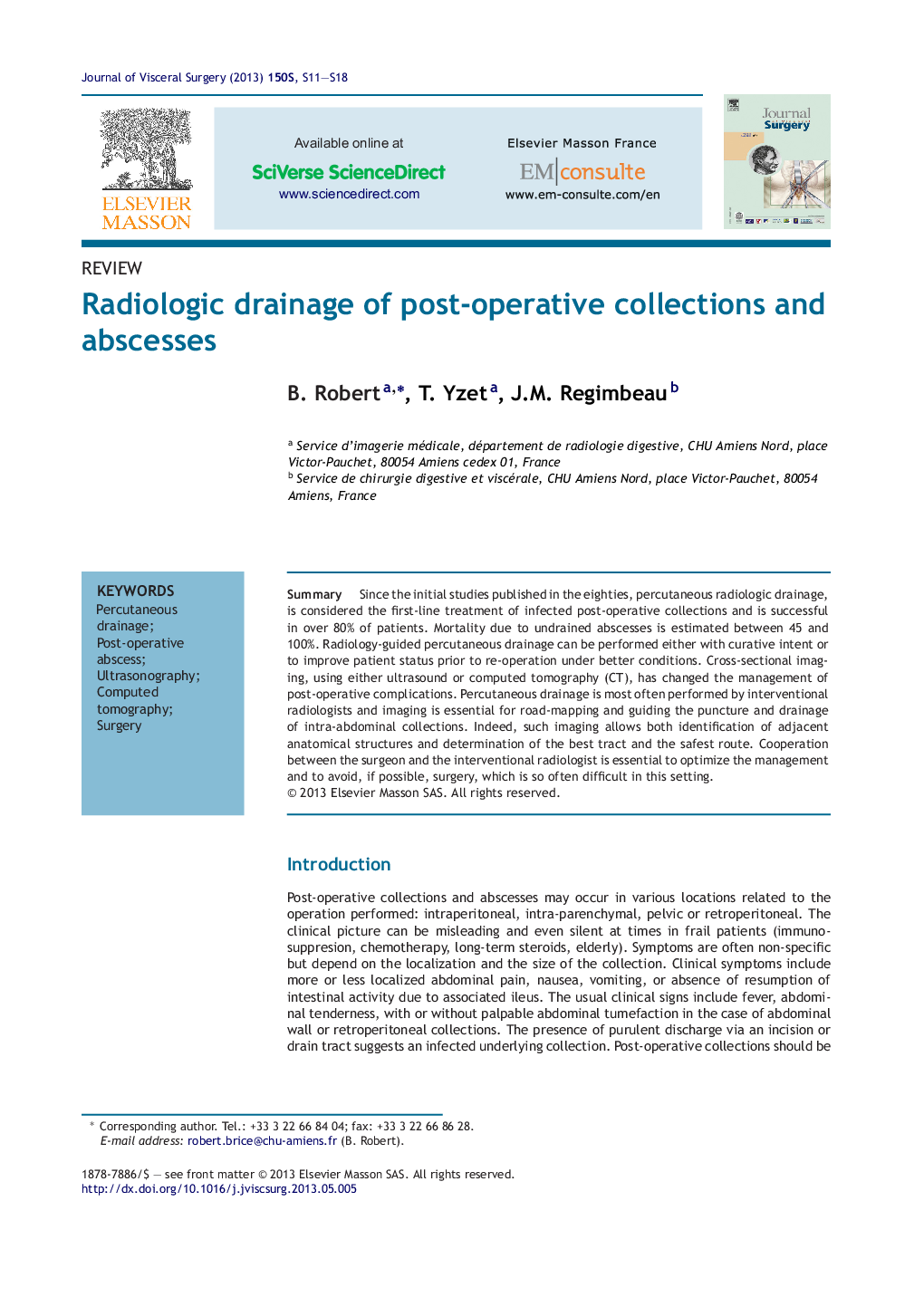| Article ID | Journal | Published Year | Pages | File Type |
|---|---|---|---|---|
| 3315875 | Journal of Visceral Surgery | 2013 | 8 Pages |
SummarySince the initial studies published in the eighties, percutaneous radiologic drainage, is considered the first-line treatment of infected post-operative collections and is successful in over 80% of patients. Mortality due to undrained abscesses is estimated between 45 and 100%. Radiology-guided percutaneous drainage can be performed either with curative intent or to improve patient status prior to re-operation under better conditions. Cross-sectional imaging, using either ultrasound or computed tomography (CT), has changed the management of post-operative complications. Percutaneous drainage is most often performed by interventional radiologists and imaging is essential for road-mapping and guiding the puncture and drainage of intra-abdominal collections. Indeed, such imaging allows both identification of adjacent anatomical structures and determination of the best tract and the safest route. Cooperation between the surgeon and the interventional radiologist is essential to optimize the management and to avoid, if possible, surgery, which is so often difficult in this setting.
